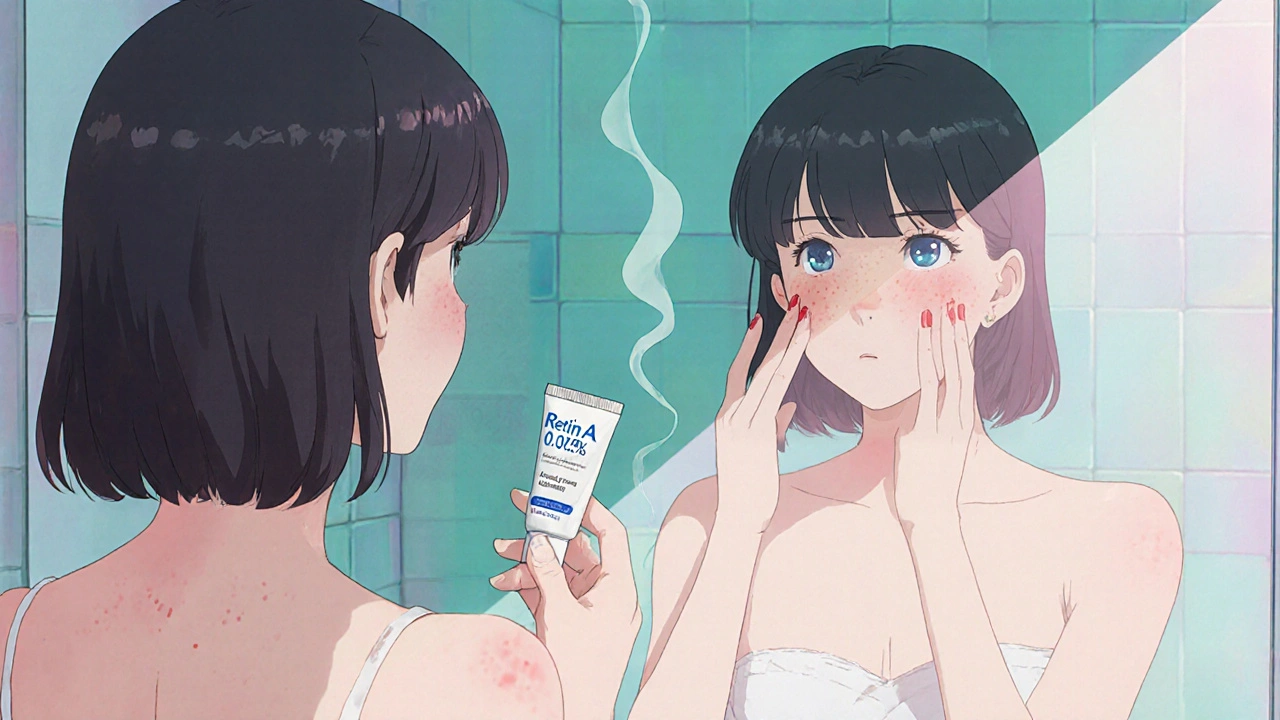When you hear Retin A 0.025%, a low-strength topical form of tretinoin used to treat acne and signs of skin aging. Also known as tretinoin cream 0.025%, it’s one of the most prescribed skin treatments for mild to moderate acne and early wrinkles. Unlike stronger versions, this concentration is often the starting point for people new to retinoids—gentle enough for sensitive skin but still effective over time.
Retin A 0.025% works by speeding up skin cell turnover, unclogging pores, and boosting collagen. It doesn’t kill bacteria like antibiotics—it reprograms how your skin behaves. That’s why it’s often paired with other treatments, like benzoyl peroxide or antibiotics, for better results. Many users see improvements in acne after 6–8 weeks, and fine lines may soften after 3–6 months. But it’s not a quick fix. Consistency matters more than intensity.
People often wonder how it stacks up against other options. Tretinoin, the active ingredient in Retin A comes in different strengths—0.01%, 0.025%, 0.05%, 0.1%—and each suits different skin types. If 0.025% feels too strong, 0.01% might be better. If it’s not doing enough after months, upgrading to 0.05% is common. Alternatives like adapalene (Differin) or tazarotene (Tazorac) are also retinoids but have different formulas and side effect profiles. Some users switch to non-retinoid options like azelaic acid or niacinamide when irritation becomes a problem.
It’s not just about acne. Dermatologists often recommend Retin A 0.025% for sun-damaged skin, uneven tone, and early signs of aging. It’s one of the few topical treatments proven to reverse some collagen loss. But it makes skin more sensitive to the sun, so sunscreen isn’t optional—it’s part of the treatment. You also need to start slow: use it 2–3 nights a week, then build up. Burning, peeling, or redness in the first few weeks? That’s normal. Lasting irritation? Talk to your doctor.
What you’ll find in the posts below are real comparisons people actually use. You’ll see how Retin A 0.025% lines up against other acne treatments, how it compares to over-the-counter retinols, and what alternatives work when your skin can’t handle it. There are also guides on managing side effects, combining it with other products, and knowing when to move up or switch. No fluff. No marketing. Just what works, what doesn’t, and why.

A side‑by‑side look at Retin A 0.025% (tretinoin) versus popular retinoid alternatives, covering efficacy, side‑effects, usage tips, and how to pick the right one for your skin.